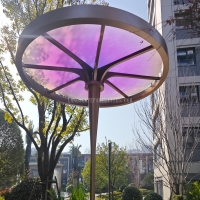Welcome to the website for landscape facilities products and knowledge.
What are the key differences between landscape tables for coastal versus inland environments?
When selecting landscape tables for outdoor spaces, understanding the distinctions between coastal and inland environments is crucial. Coastal areas expose furniture to saltwater, high humidity, and strong winds, demanding materials like marine-grade aluminum, teak, or powder-coated steel to resist corrosion. Inland tables, however, face less extreme conditions but require UV-resistant finishes and sturdy construction to withstand temperature fluctuations.
Design-wise, coastal tables often feature lightweight, rust-proof frames and slatted surfaces for drainage, while inland designs prioritize aesthetics and comfort with heavier materials like wrought iron or treated wood. Maintenance also differs—coastal tables need frequent rinsing to remove salt, whereas inland furniture benefits from seasonal sealing.
Ultimately, the choice hinges on environmental demands. Coastal settings demand durability against salt and moisture, while inland tables balance longevity with visual appeal. Investing in the right materials ensures longevity and performance in either environment.
Related search:

Recommendation
Metal frame with gradient color acrylic combined with high-end shading landscape facilities